-
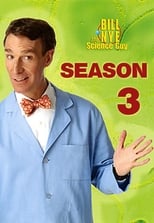
-
-
Bill Nye The Science Guy : Season 3
-
Air date: 14 Jan '95 - 20 episodesBill Nye the Science Guy is an educational television program that originally aired from September 10, 1993 to June 20, 1998, hosted by William "Bill" Nye and produced by Buena Vista Television. The show aired on PBS Kids and was also syndicated to local stations. Each of the 100 episodes aims to teach a specific topic in science to a preteen audience. The show is frequently used in schools as an education medium, and it still airs on some PBS stations for this reason. Created by comedian Ross Shafer and based on sketches on KING-TV's sketch program Almost Live!, Bill Nye the Science Guy was produced by Disney Educational Productions and KCTS-TV of Seattle. Bill Nye the Science Guy won nineteen Emmy Awards during its run.
-
-
List of Episodes (20)
-
Bill Nye The Science Guy (1993)

-
1. Planets & Moons
14 Jan '95In Bill Nye the Science Guy: Forests, Nye shows students the levels of a forest, which include the canopy, the under story, and the floor. His special guest is Nalini Nadkarni, who has no qualms about going high up in the canopy to check out the wildlife and other happenings there
-
Bill Nye The Science Guy (1993)
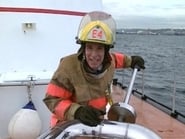
-
2. Pressure
21 Jan '95In this program, he points out the different ways in which humans and animals exchange information. He also talks about the ability of humans to store data in computers, books, and on videotapes.
-
Bill Nye The Science Guy (1993)
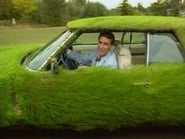
-
3. Plants
28 Jan '95The momentum of a moving thing, like you riding your bike, depends on how much mass you and your bike have and how fast you’re speeding down that hill. An elephant on a bike has more momentum than a mouse on a bike moving at the same speed. A mouse on a fast bike has more momentum than a mouse on a slow bike. If there’s an elephant on a fast bike, you’d better get out of the way.
-
Bill Nye The Science Guy (1993)
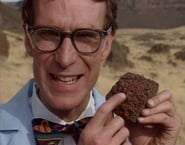
-
4. Rocks & Soil
03 Feb '95Bill Nye teaches us about reptiles.
-
Bill Nye The Science Guy (1993)
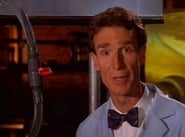
-
5. Energy
10 Feb '95The air that surrounds Earth is called the atmosphere. Compared to the size of the Earth, the atmosphere is very, very thin. It’s made from gases – mainly nitrogen, oxygen, and water vapor, with a little argon, carbon dioxide, xenon, neon, helium, and sulfur. The atmosphere does a lot for Earth. It blocks ultraviolet light and burns up a lot of meteors. It traps in heat, keeping Earth cozy. Even clouds are formed in the atmosphere – keeping the Earth wet with rain.
-
Bill Nye The Science Guy (1993)

-
6. Evolution
17 Feb '95How breathing supplies the body with the oxygen it needs
-
Bill Nye The Science Guy (1993)
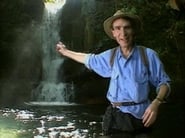
-
7. Water Cycle
24 Mar '95
-
Bill Nye The Science Guy (1993)
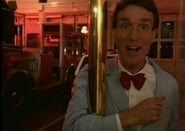
-
8. Friction
31 Mar '95
-
Bill Nye The Science Guy (1993)

-
9. Germs
07 Apr '95
-
Bill Nye The Science Guy (1993)

-
10. Climate
14 Apr '95There are lots of different climates all over the world. Deserts are warm and dry. Temperate forests are cold and wet. Tropical rain forests are warm and wet. Animals and plants live in climates that are good places for them to live. Cacti wouldn’t grow too well in the Arctic, just like polar bears would over heat in the desert.
-
Bill Nye The Science Guy (1993)
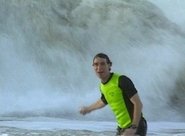
-
11. Waves
21 Apr '95
-
Bill Nye The Science Guy (1993)

-
12. Ocean Life
28 Apr '95
-
Bill Nye The Science Guy (1993)
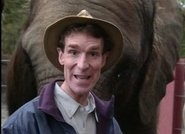
-
13. Mammals
08 Sep '95Each planet is different. They are all different sizes – Pluto’s the smallest, and Jupiter’s the biggest. They come in a variety of colors – Mars is covered with rust, so it looks red; the methane (cold natural gas) in the atmosphere of Uranus makes it look blue; and Saturn’s colorful rings are made of icy rock. As far as we know now, Earth is the only planet in our solar system that is home to living things.
-
Bill Nye The Science Guy (1993)
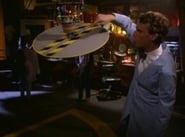
-
14. Spinning Things
15 Sep '95When you push something, you’re using pressure. Pressure depends on two things – the power of the push and the area that’s being pushed on. A push on a small area makes more pressure than the same size push on a big area. Pushing hard on something creates more pressure than a little nudge, naturally.
-
Bill Nye The Science Guy (1993)
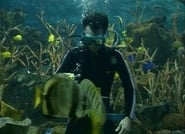
-
15. Fish
22 Sep '95A plant’s recipe for food has only three main ingredients: sunlight, carbon dioxide, and water. When plants make their food, they give off what animals need – oxygen. Without oxygen, animals like us wouldn’t be able to breathe. If plants weren’t here on Earth, we wouldn’t be here.
-
Bill Nye The Science Guy (1993)
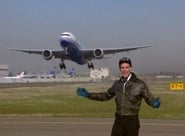
-
16. Human Transportation
29 Sep '95We live on top of rocks – the Earth’s surface. There are three basic types of rocks — igneous, sedimentary, and metamorphic — and each type is made a different way. Igneous rocks are made from cooled lava. Sedimentary rocks are made from small pieces of other rocks stuck together. Metamorphic rocks are formed when other rocks are heated or pressed, or both. One type of rock can change into another type of rock as the Earth’s surface shifts and changes. It takes the right conditions and
-
Bill Nye The Science Guy (1993)

-
17. Wetlands
06 Oct '95Energy can change forms. Your body changes the energy in food into energy you can use to do things. Dams turn the energy in falling water into electrical energy to bring power to your house. Sound energy changes into moving energy (like when the bass is so high you can feel the floor move).
-
Bill Nye The Science Guy (1993)
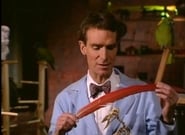
-
18. Birds
13 Oct '95All living things have genes, which are like little sets of blueprints. Genes have information about the color of your eyes, the shape of your nose, and whether you hair is straight or curly. When living things make other living things, they pass copies of these blueprints to the offspring. The copies are mixtures. They’re never exact, never quite perfect. So, the cool thing is that no two sets of blueprints are exactly alike. So each living thing is different from other living things.
-
Bill Nye The Science Guy (1993)

-
19. Populations
20 Oct '95About 70% of the Earth’s surface is covered in water, and almost all of that water has been around since the Earth formed billions and billions of years ago. That means a glass of water you drink today could be water that a dinosaur once sipped. Water is constantly recycled on Earth as rain, snow, sleet and hail. It makes its way in and out of oceans, lakes, streams, hail, and glaciers. Scientists call the recycling of water the water cycle (not that bad, huh?).
-
Bill Nye The Science Guy (1993)

-
20. Animal Locomotion
27 Oct '95Friction is a force that slows moving things down and turns the moving energy into heat energy. When two things rub together, like your bike tires and the road, friction between them slows you down. There’s also friction in the metal parts of the wheel’s hub – at the center. There’s even friction between the fibers and rubber of the tires themselves as they flex and roll. That’s why you eventually stop rolling when you stop pedaling. Rough things make more friction than smooth things.
-



























